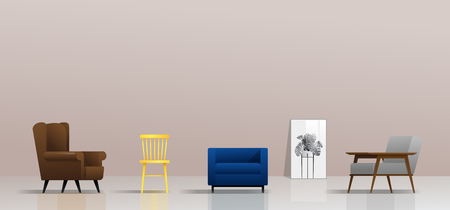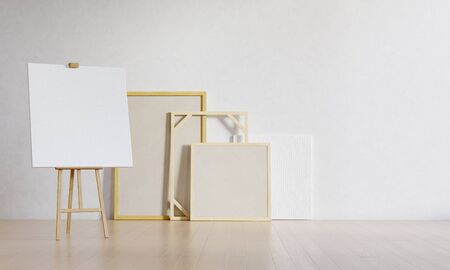Introduction to British Minimalism
When we think of minimalism, clean lines, open spaces, and a sense of calm immediately spring to mind. Yet, in the UK, this design philosophy has taken on its own distinct flavour—one that’s both practical and deeply rooted in British culture. British minimalism isn’t about stripping everything bare; it’s about curating a living environment that reflects both function and personal history. Originating from post-war sensibilities that valued resourcefulness and simplicity, this approach has evolved into a modern expression where less truly becomes more. At its heart are principles such as restraint, thoughtful selection, and an appreciation for craftsmanship over excess. The uniquely British character of minimalism emerges through subtle nods to heritage—think original fireplaces left intact amidst contemporary furnishings or heirloom ceramics displayed with pride but without clutter. This blend of old and new, tradition and innovation, sets the stage for how British minimalism continues to shape contemporary living spaces across the UK today.
2. Historical Influences and Local Traditions
British minimalism, as seen in today’s living spaces, is deeply rooted in the country’s layered history and unique cultural evolution. Unlike the stark, radical minimalism sometimes associated with modernist movements elsewhere, British minimalism draws upon centuries of architectural sensibility, social habits, and a characteristic appreciation for subtlety over ostentation. From Georgian symmetry to Victorian pragmatism and post-war resourcefulness, each era has left its mark on how Britons organise their homes—placing function, restraint, and refined detailing at the heart of interior design.
Architectural Heritage: Form Follows Function
The British approach to minimalism often prioritises practicality without sacrificing comfort or warmth. Townhouses from the Georgian period introduced balanced proportions and uncluttered layouts, while the Arts and Crafts movement celebrated craftsmanship and honest materials. These historical influences persist today in the use of natural wood floors, understated mouldings, and built-in cabinetry that maximises every inch of space. The result is a style that feels lived-in yet streamlined, where everything has its place but nothing feels overly sterile.
Cultural Habits: Restraint and Subtle Detailing
Minimalism in Britain isn’t just about what you remove—it’s about what you choose to keep. The national tendency toward understatement means decorative elements are rarely flashy; instead, they’re thoughtfully selected for both beauty and utility. This mindset is reflected in everyday habits like favouring practical furnishings, using soft textiles for cosiness, and displaying a few cherished objects rather than filling shelves to the brim. It’s a way of living that values clarity, calmness, and authenticity.
Key Elements Shaped by History and Tradition
| Influence | Impact on Minimalist Living Spaces |
|---|---|
| Georgian Proportion | Balanced room layouts & large windows for natural light |
| Victorian Pragmatism | Multi-functional furniture & clever storage solutions |
| Post-War Resourcefulness | Simplicity in design & careful selection of durable materials |
This heritage-driven perspective ensures that British minimalism remains distinctively local—never cold or impersonal, but always reflecting a quiet respect for history, tradition, and everyday life.

3. Minimalism in British Home Design
Minimalism in British home design is more than just a visual aesthetic; it’s a way of living that resonates deeply with the rhythms of everyday life across the UK. Whether nestled within the red-bricked charm of terraced houses or set against the clean lines of modern city flats, British minimalism finds its roots in practicality and subtle sophistication. The approach often begins with a commitment to decluttering—paring back possessions to the essentials, letting go of what no longer serves a purpose, and making space for what truly matters. Thoughtful storage solutions are at the heart of this movement. Under-stair cupboards, built-in wardrobes, and cleverly concealed shelving units help Londoners and countryside dwellers alike maintain tidy, functional spaces without sacrificing comfort. Purposeful decor plays a crucial role as well; rather than filling every surface, each item is carefully selected for both its beauty and utility. Soft textiles in muted tones, a single piece of art above the mantelpiece, or a cherished antique inherited from family—these touches bring warmth and personality without overwhelming the senses. In Britain’s often compact living environments, such as period homes with snug rooms or new-build apartments with open-plan layouts, minimalism offers a refreshing sense of calm. By focusing on quality over quantity and embracing considered organisation, British minimalism shapes contemporary living spaces that feel both inviting and effortlessly ordered.
Material Choices and Colour Palettes
British minimalism distinguishes itself through a careful selection of materials and a restrained approach to colour. The emphasis lies in authenticity, durability, and an inherent connection to the natural world. Rather than flashy or synthetic finishes, British minimalist interiors lean into honest materials that age gracefully, revealing character over time. Oak, ash, and walnut are preferred for their timeless appeal and tactile warmth, while natural fibres such as wool and linen bring understated comfort to living spaces.
The palette that defines this style is equally subdued. Instead of stark whites or bold contrasts, British minimalism favours muted, earthy tones that evoke the country’s landscape and weather. Subtle greys, soft creams, gentle greens, and warm taupes create calm backdrops that encourage relaxation without feeling cold or sterile. These hues adapt elegantly to Britain’s often overcast skies, making interiors feel both welcoming and harmonious throughout the year.
Common Material Preferences in British Minimalist Homes
| Material | Characteristics | Typical Usage |
|---|---|---|
| Oak Wood | Durable, warm-toned, ages well | Flooring, furniture, shelving |
| Linen | Natural fibre, breathable texture | Curtains, upholstery, bedding |
| Stone (e.g., slate) | Earthy, tactile surface | Fireplaces, flooring accents |
| Ceramics | Handcrafted feel, simple glazes | Tableware, decorative objects |
Signature Colour Palette Examples
| Tone | Description |
|---|---|
| Moss Green | Evokes British woodlands; pairs well with wood textures |
| Pewter Grey | Softly reflective; reminiscent of cloudy skies |
| Ecru/Cream | Adds warmth without overpowering the space |
| Taupe/Biscuit | Grounds interiors with earthy neutrality |
This thoughtful interplay between material authenticity and nuanced colour ensures that every item in a British minimalist home serves a purpose—either functional or quietly beautiful. The result is an environment that feels curated yet lived-in: spaces where simplicity meets comfort and timelessness.
5. Everyday Functionality & Sustainable Living
At the heart of British minimalism lies a deep commitment to everyday practicality, where living spaces are designed to be genuinely lived in rather than simply admired. This ethos translates into rooms that effortlessly blend form and function, with every item serving a purpose and every corner thoughtfully utilised. Clever storage solutions—think under-stair cupboards, built-in shelving, and multi-purpose furniture—are hallmarks of contemporary British homes. These elements ensure that even the most compact London flat can remain tidy and inviting, without ever feeling sparse or clinical.
The British approach to minimalism places a strong emphasis on sustainability. There’s a growing preference for quality over quantity, with homeowners favouring well-crafted pieces that stand the test of time over fast furniture fads. Materials like reclaimed wood, recycled glass, and locally sourced textiles not only add warmth and character but also align with eco-conscious values. Upcycling and repurposing have become second nature—a vintage sideboard might be given new life as a media unit, while old crates find use as stylish storage. This practical yet mindful attitude ensures that minimalism here is never about deprivation; instead, it’s about making thoughtful choices that enhance both daily life and the world we share.
6. Embracing Personality Through Restraint
British minimalism is not about stripping a home of all character; rather, it’s about curating what truly matters and allowing individual personality to shine within well-considered boundaries. The beauty of this approach is in its subtlety—there’s a quiet confidence in a space that celebrates simplicity while weaving in personal narratives. Many British homes achieve this by thoughtfully incorporating heritage pieces or cherished family heirlooms. These items, be it a vintage Welsh blanket draped over a modern sofa or an antique tea set displayed on pared-back shelves, become focal points that offer warmth and meaning without overwhelming the room.
This ethos extends beyond inheritance. Local artisanal objects—perhaps a hand-thrown ceramic vase from Cornwall or a print by a London-based artist—are chosen with care, reflecting both personal taste and regional pride. These touches infuse contemporary living spaces with authenticity, reminding us that minimalism needn’t feel cold or impersonal. Instead, British minimalism encourages restraint as a framework for self-expression: each piece has intention, each corner tells a story. In this way, the home becomes a calm retreat that honours both modern sensibilities and the richness of local tradition.
Conclusion: The Evolving British Minimalist Aesthetic
Contemporary living spaces in the UK eloquently showcase a subtle yet profound interplay between minimalism and distinctly British lifestyle values. While pared-back interiors and thoughtful design choices have become central to the way many Britons now approach their homes, these spaces are far from sterile or impersonal. Instead, they are layered with quiet warmth, heritage nods, and a lived-in authenticity that only comes from understanding what truly matters in daily life. The evolution of British minimalism is not just about reducing clutter or adopting a monochrome palette; it’s about cultivating environments that foster calm, support wellbeing, and tell personal stories through carefully chosen details. This ongoing dialogue between simplicity and sentiment ensures that British homes remain inviting, functional, and uniquely expressive. As new generations continue to reinterpret minimalism—embracing sustainable materials, multipurpose furniture, and a clear sense of purpose—the British minimalist aesthetic will keep adapting, quietly shaping the rhythm of modern living while honouring the nation’s enduring appreciation for comfort, character, and understated elegance.


